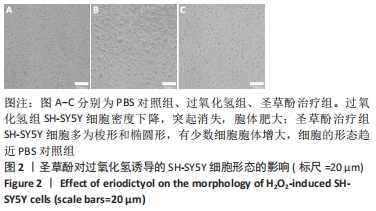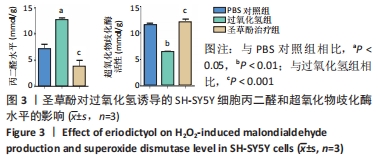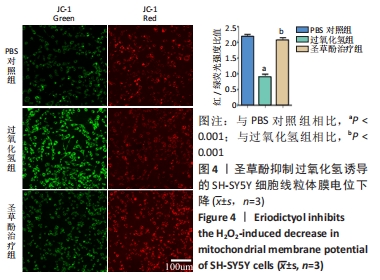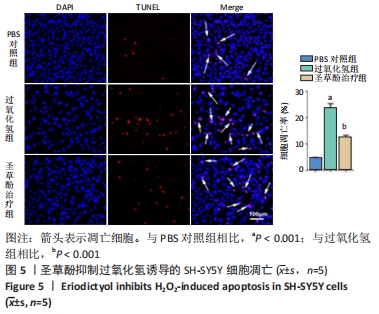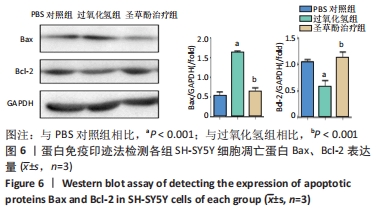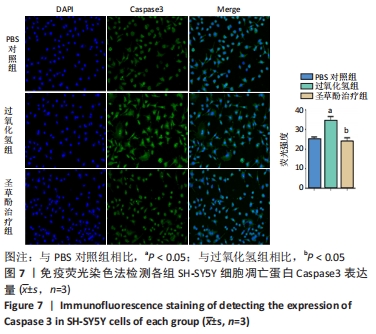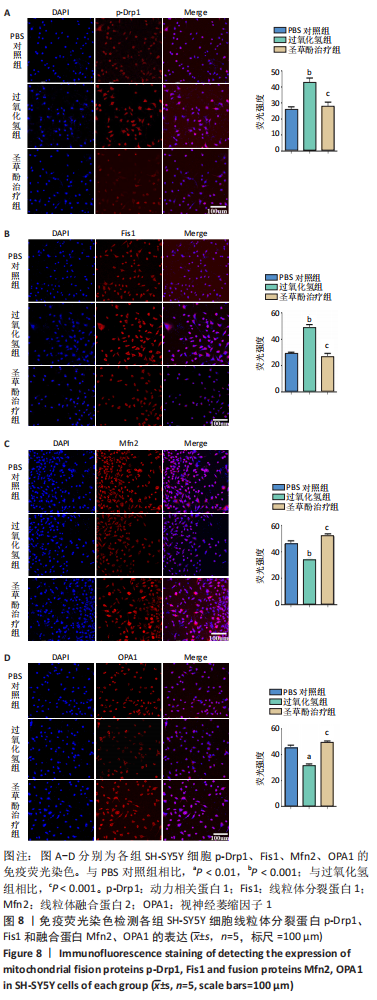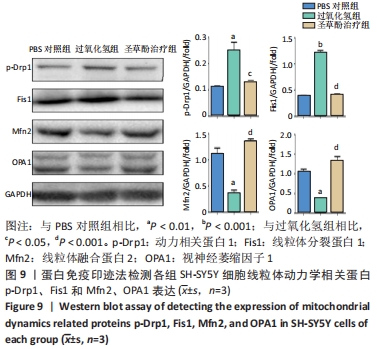[1] ELFAWY HA, DAS B. Crosstalk between mitochondrial dysfunction, oxidative stress, and age related neurodegenerative disease: Etiologies and therapeutic strategies. Life Sci. 2019;218:165-184.
[2] KONOVALOVA J, GERASYMCHUK D, PARKKINEN I, et al. Interplay between MicroRNAs and Oxidative Stress in Neurodegenerative Diseases. Int J Mol Sci. 2019;20(23):6055.
[3] SINGH A, KUKRETI R, SASO L, et al. Oxidative Stress: A Key Modulator in Neurodegenerative Diseases. Molecules. 2019;24(8):1583.
[4] MOREIRA PI, SIEDLAK SL, WANG X, et al. Increased autophagic degradation of mitochondria in Alzheimer disease. Autophagy. 2007; 3(6):614-615.
[5] SALIM S. Oxidative Stress and the Central Nervous System. J Pharmacol Exp Ther. 2017;360(1):201-205.
[6] FLIPPO KH, STRACK S. Mitochondrial dynamics in neuronal injury, development and plasticity. J Cell Sci. 2017;130(4):671-681.
[7] SUBRAMANIAM SR, CHESSELET MF. Mitochondrial dysfunction and oxidative stress in Parkinson’s disease. Prog Neurobiol. 2013;106-107: 17-32.
[8] BHATTI JS, BHATTI GK, REDDY PH. Mitochondrial dysfunction and oxidative stress in metabolic disorders - A step towards mitochondria based therapeutic strategies. Biochim Biophys Acta Mol Basis Dis. 2017; 1863(5):1066-1077.
[9] MANCZAK M, CALKINS MJ, REDDY PH. Impaired mitochondrial dynamics and abnormal interaction of amyloid beta with mitochondrial protein Drp1 in neurons from patients with Alzheimer’s disease: implications for neuronal damage. Hum Mol Genet. 2011;20(13):2495-2509.
[10] MARÍN-GARCÍA J, AKHMEDOV AT. Mitochondrial dynamics and cell death in heart failure. Heart Fail Rev. 2016;21(2):123-136.
[11] REDDY PH, REDDY TP, MANCZAK M, et al. Dynamin-related protein 1 and mitochondrial fragmentation in neurodegenerative diseases. Brain Res Rev. 2011;67(1-2):103-118.
[12] LOSÓN OC, CHEN H, CHAN DC. Fis1, Mff, MiD49 and MiD51 facilitate Drp1 recruitment for mitochondrial fission. FASEB J. 2013;27(5):659-667.
[13] FLANNERY PJ, TRUSHINA E. Mitochondrial dynamics and transport in Alzheimer’s disease. Mol Cell Neurosci. 2019;98:109-120.
[14] KNIGHT T, LUEDTKE D, EDWARDS H, et al. A delicate balance - The BCL-2 family and its role in apoptosis, oncogenesis, and cancer therapeutics. Biochem Pharmacol. 2019;162:250-261.
[15] ABATE M, FESTA A, FALCO M, et al. Mitochondria as playmakers of apoptosis, autophagy and senescence. Semin Cell Dev Biol. 2020;98: 139-153.
[16] ESTAQUIER J, VALLETTE F, VAYSSIERE JL, et al. The mitochondrial pathways of apoptosis. Adv Exp Med Biol. 2012;942:157-183.
[17] HE P, YAN S, ZHENG J, et al. Eriodictyol Attenuates LPS-Induced Neuroinflammation, Amyloidogenesis, and Cognitive Impairments via the Inhibition of NF-κB in Male C57BL/6J Mice and BV2 Microglial Cells. J Agric Food Chem. 2018;66(39):10205-10214.
[18] JING X, SHI H, ZHU X, et al. Eriodictyol Attenuates β-Amyloid 25-35 Peptide-Induced Oxidative Cell Death in Primary Cultured Neurons by Activation of Nrf2. Neurochem Res. 2015;40(7):1463-1471.
[19] YANG R, WEI L, FU QQ, et al. SOD3 Ameliorates H2O2-Induced Oxidative Damage in SH-SY5Y Cells by Inhibiting the Mitochondrial Pathway. Neurochem Res. 2016;41(7):1818-1830.
[20] 张婧.圣草酚通过促进小胶质细胞增殖改善阿尔茨海默病认知功能[D].太原:山西中医药大学,2020.
[21] LIN MT, BEAL MF. Mitochondrial dysfunction and oxidative stress in neurodegenerative diseases. Nature. 2006;443(7113):787-795.
[22] JI T, ZHANG X, XIN Z, et al. Does perturbation in the mitochondrial protein folding pave the way for neurodegeneration diseases? Ageing Res Rev. 2020;57:100997.
[23] BHAT AH, DAR KB, ANEES S, et al. Oxidative stress, mitochondrial dysfunction and neurodegenerative diseases; a mechanistic insight. Biomed Pharmacother. 2015;74:101-110.
[24] LEJRI I, AGAPOUDA A, GRIMM A, et al. Mitochondria- and Oxidative Stress-Targeting Substances in Cognitive Decline-Related Disorders: From Molecular Mechanisms to Clinical Evidence. Oxid Med Cell Longev. 2019;2019:9695412.
[25] 顾婷,徐占玲,曹玲,等.圣草酚对Aβ(25-35)诱导的PC12细胞损伤的保护作用及其机制[J].现代生物医学进展,2018,18(7):1230-1233.
[26] HE P, YAN S, WEN X, et al. Eriodictyol alleviates lipopolysaccharide-triggered oxidative stress and synaptic dysfunctions in BV-2 microglial cells and mouse brain. J Cell Biochem. 2019;120(9): 14756-14770.
[27] 张群子,范瑛,汪年松.线粒体损伤在糖尿病肾病发病机制中的研究进展[J].世界临床药物,2020,41(10):776-782.
[28] DUBOFF B, FEANY M, GÖTZ J. Why size matters - balancing mitochondrial dynamics in Alzheimer’s disease. Trends Neurosci. 2013; 36(6):325-335.
[29] OLIVER D, REDDY PH. Dynamics of Dynamin-Related Protein 1 in Alzheimer’s Disease and Other Neurodegenerative Diseases. Cells. 2019;8(9):961.
[30] QI Z, HUANG Z, XIE F, et al. Dynamin-related protein 1: A critical protein in the pathogenesis of neural system dysfunctions and neurodegenerative diseases. J Cell Physiol. 2019;234(7):10032-10046.
[31] LONG JM, HOLTZMAN DM. Alzheimer Disease: An Update on Pathobiology and Treatment Strategies. Cell. 2019;179(2):312-339.
|


